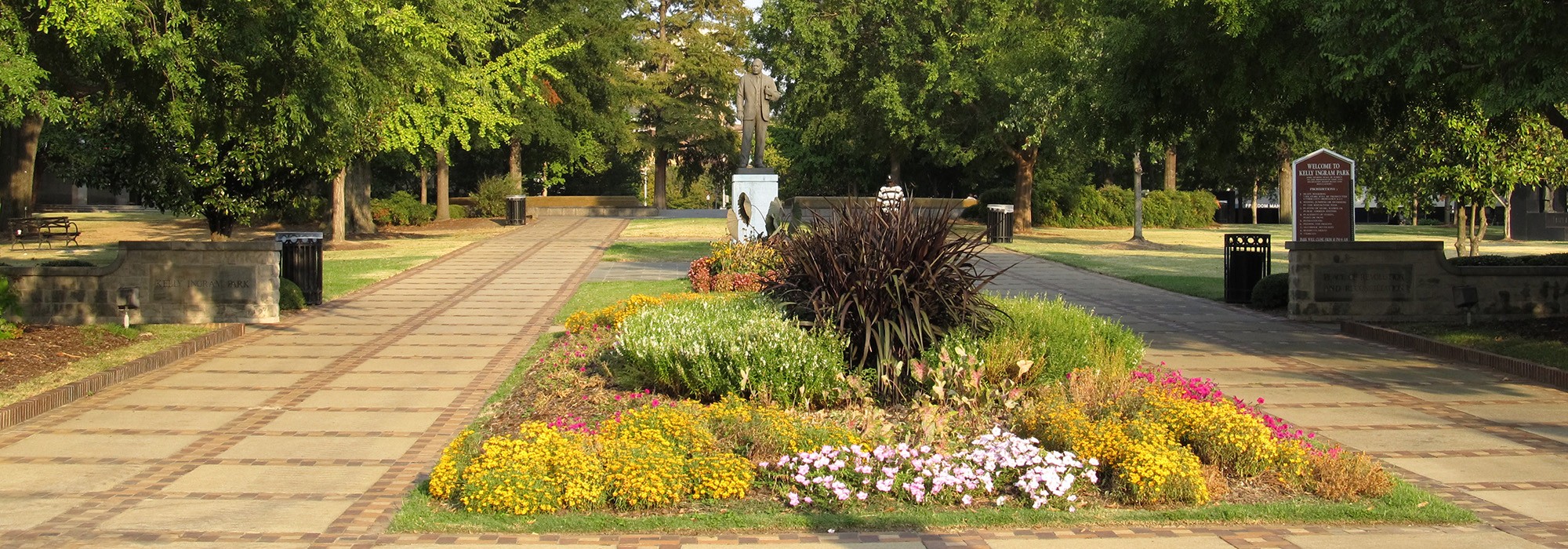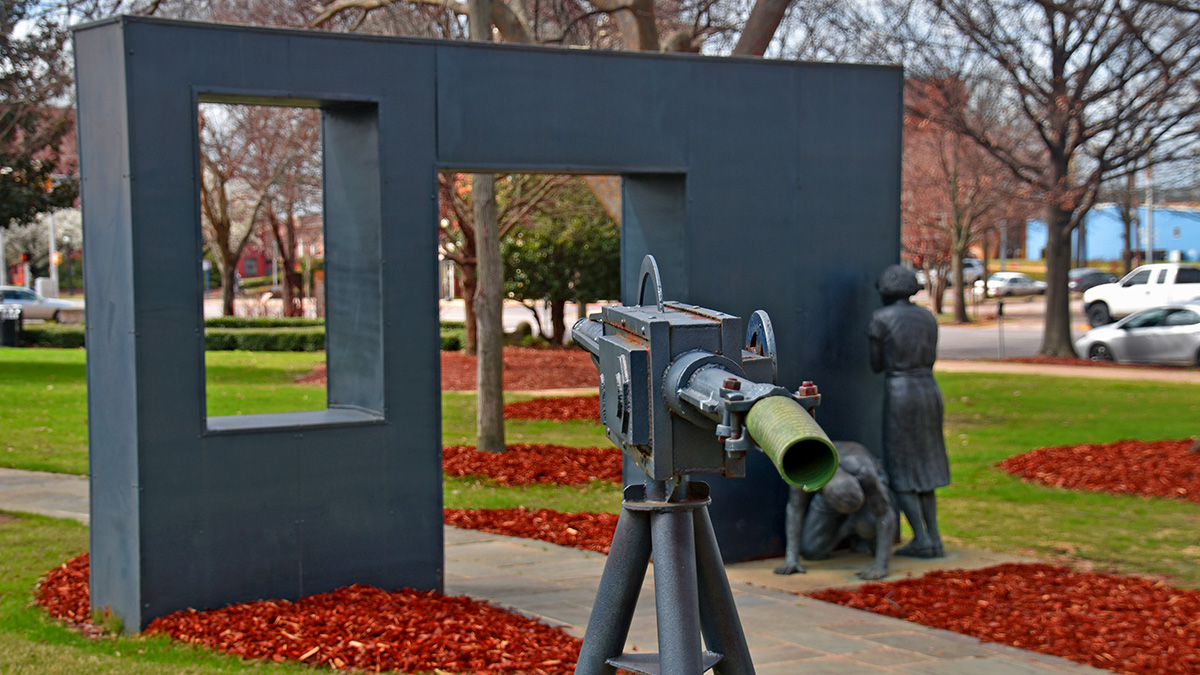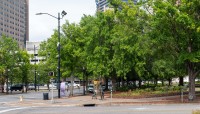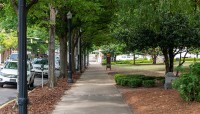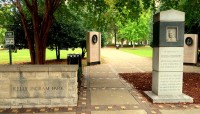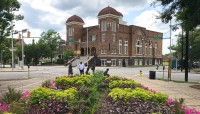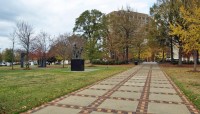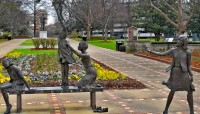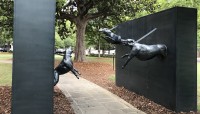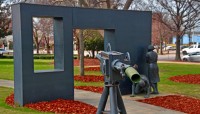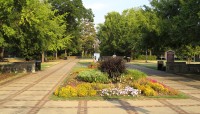Landscape Information
Aligned with the city’s grid at a northwest-southeast orientation, this square, four-acre park was one of three platted by surveyor William Barker in the city’s 1871 plan. Originally known as West Park, the name was changed in 1932 to honor the first American sailor killed in World War I. The square drew national attention in 1963 as the site of violent attacks by law enforcement against civil rights protesters, including children. It was redesigned by Grover Harrison Harrison landscape architects (now Greenview Studio Inc.) in 1992.
Featuring four diagonal axial paths that converge at its center, the park is marked by an approximately 30-foot-diameter plaza embellished with a quadripartite arrangement of decorative water basins. Paved with granite, the plaza affords borrowed views of the Birmingham Civil Rights Institute (BCRI) and historic 16th Street Baptist Church, just west and northwest of the square, respectively. The park includes lawn, divided into four quadrants, interspersed with mature oaks, magnolias, and bald cypresses, including specimens that shielded protesters from high pressure hoses in 1963. A circular bluestone path complements the plaza and water basins, showcasing commemorative sculptures by the artist James Drake. The linear paths feature intricate brickwork, inspired by African American textiles, repeated across 16th Street, adjacent to the BCRI.
The entrances to the square are enhanced by low limestone walls, crepe myrtle plantings, interpretive signage, and additional sculptures from numerous artists commemorating civil rights figures. These include a refurbished statue of Martin Luther King, Jr., and a sculptural assemblage of the four young girls killed in the 1963 bombing of the 16th Street Baptist Church, by Elizabeth MacQueen. The square was listed in the National Register of Historic Places in 1984 and is located within the Birmingham Civil Rights National Monument, established by President Barack Obama in 2017.



